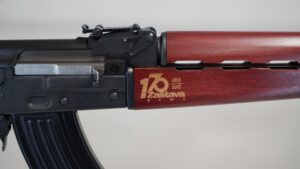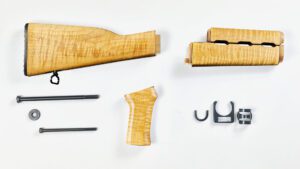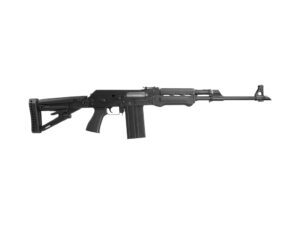You want a calmer shot, faster follow-ups, and a hunt that doesn’t leave your ears ringing. A suppressed ZPAP does all of that while keeping the classic Zastava feel: tough steel and smooth action. Below is a field-ready guide that stays 100% Zastava – platform choices, setup tips, ammo picks, and practical tactics for hunting with a suppressed ZPAP.
Why A Suppressed ZPAP Shines In The Field
A good suppressor cuts blast and muzzle jump, so you keep your sight picture and call your shot. Animals spook less, you track movement better, and you place rounds with more confidence.
Your partners also thank you because your rifle no longer sounds like a thunderclap at five meters. Add the Zastava build quality—beefy receiver, proven trunnions, rock-solid barrels—and you get a rifle that stays zeroed and keeps groups tight with a can attached.
Pick The Right ZPAP Platform
- ZPAP M70 (7.62×39): The do-everything woods rifle. It carries well, hits hard at typical deer and hog distances. Recoil feels mild once you add the can, which helps with quick second shots on moving hogs.
- ZPAP M90 (5.56×45): Flat trajectory, light recoil, and an adjustable gas system that makes suppression feel easy. Bonded or controlled-expansion 5.56 loads handle varmints and small deer where local regs allow.
- ZPAP M77 (.308/7.62×51): Reach and authority for open country. Many hunters use it for hogs, mule deer, or similar game that requires more energy downrange.
All three rifles accept quality optics and rugged mounts, so you can build a clean, low-profile hunting rig without guesswork.
Set Up For Suppressed Success
- Use the correct interface. Match your muzzle device and threads to the rifle’s barrel specs. If you add a mount, torque to spec, and verify that the shoulder seats squarely.
- Confirm bore alignment. Zastava offers suppressor alignment rods in 5.56/.223 and 7.62/.30 cal. Slide the rod through the mounted can to confirm concentricity before the first live round. This quick step safeguards the baffles and your hunt.
- Tune the gas. On the M90 and M77, start with a conservative gas setting and open it until the rifle locks the bolt back on a single round. That keeps ejection reliable while reducing blowback and parts wear.
- Re-zero with the can attached. A suppressor can shift the point of impact a few centimeters. Zero at the distance you expect to shoot most often, 100 meters, and note any shift between “can on” and “can off.” Then leave the can on for all final checks.
Choose Ethical, Effective Ammo
Match bullet construction to game and distance.
- 7.62×39: Bonded 123-gr loads hit hard and hold together on deer-sized animals.
- 5.56: Choose bonded or copper-expanding bullets.
- .308: 165–168-gr soft-points balance expansion and depth for bigger game.
Run a short accuracy test with the exact lot you plan to take into the field. Confirm velocity if you use a rangefinder with ballistic features, and lock your dope.
Optics And Sighting That Just Works
A low-power variable optic (LPVO) or a compact 2–6× scope fits the ZPAP profile for most hunts. Keep the height over bore consistent across rifles in case you swap optics.
For twilight shots, an illuminated reticle helps, and a simple offset red-dot gives you close-range speed without bulk.
Fieldcraft: Close The Distance, Keep The Shot
A suppressor lowers the sonic footprint, but it doesn’t erase poor woodsmanship. Work with the wind, move slowly, and use the terrain. From a tripod or pack rest, drive the rifle straight back into your shoulder and keep your cheek weld constant.
The can shifts balance forward a touch; embrace that and let the muzzle settle on target. Follow through, watch the animal, and get ready to place a second shot if the situation calls for it.
Legal And Safety Notes You Should Not Skip
Follow all federal, state, and local laws.
In the U.S., suppressor ownership runs through the National Firearms Act process, a background check, and a tax stamp. Many states allow suppressors in the field for hunting, while a few set extra conditions.
Confirm the current rules where you live and where you plan to hunt. Transport the rifle and the suppressor in a locked case, store paperwork with you, and keep serial numbers recorded. Safety still rules the day: muzzle control, clear backstops, and deliberate target ID—always.
Keep The Rifle And Can In Top Shape
Let the suppressor cool before you remove it. Wipe carbon off the mount, check thread shoulders, and keep a touch of anti-seize where the manufacturer recommends it. Inspect the gas setting on adjustable models after range work so you don’t walk into a dawn hunt on the wrong notch.
Lube the action lightly, confirm torque on optic mounts, and keep a spare firing pin and extractor in your kit if you travel far from a parts counter.
Final Words
Zastava rifles already bring old-world strength and modern accuracy. Add a well-set-up suppressor, and the platform turns into an even better hunting machine—calmer, steadier, and easier on your ears and your neighbors in the blind.
Pick your ZPAP, tune it right, and step into the woods with a rig that feels dialed from the first light to the last legal minute.



